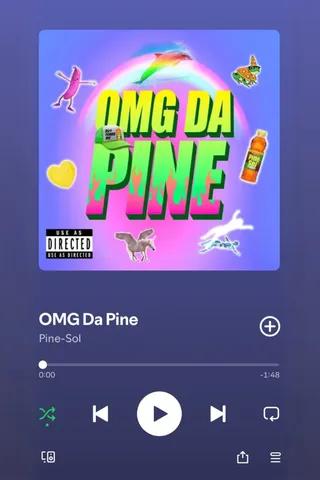
What Is Vibe Marketing, And How Do I Get Started?
You’ve probably heard the term “vibe marketing” whispered in strategy meetings and mentioned in trending LinkedIn posts, but let’s be real: few of us know what exactly it is—and why we should care.
In the age of artificial intelligence (AI) and budget maxxing, small- to medium-sized businesses are looking to vibe marketing strategies to scale in smarter ways.
What Is Vibe Marketing?
At its core, vibe marketing is less about what you say and more about how you say it. Product specs and calls to action are used to support emotional resonance rather than the other way around.
On the surface, vibe marketing is about energy over precision, leveraging cultural references, brand aesthetics and shared humanity to connect with consumers beyond your product or service. Take Pine-Sol’s recent move for instance: the household cleaner completely juked its usual product promos to… create a dance track that it posted to Spotify. What does it have to do with cleaning sinks and bathtubs? Absolutely nothing. But the campaign’s ridiculous visuals and relatable lyrics (e.g., “I cleaned so deep I started to heal my inner child”) create a memorable connection.
Vibe marketing is about energy over precision.
Beneath the surface, vibe marketing is really about meeting growing consumer demands for feel-good content and meeting companies’ needs for budget-conscious content creation. Vibe marketing is, in practice, a way for small marketing teams or solo marketers to create collateral at scale with fewer dollars and less oversight. With a few simple prompts, a marketer can use AI to build entire campaigns that don’t require deep insights into the product, service or brand because, as long as the vibes are good, it doesn’t have to.
What Are the Pros & Cons of Vibe Marketing?
No matter which side you are on in the argument for/against AI, you must at least acknowledge that vibe marketing brings both pros and cons to the table.
Pros 👍
- Connect emotionally at scale. Artificial intelligence allows brands to ideate, create and deploy emotionally resonant messaging across multiple platforms faster than a human, empowering you to connect with consumers on more channels than before.
- Break through the feature fog. Your competitors probably have similar product or service features, meaning your messaging often feels near-identical. Sometimes what makes you stand out is the how, not the what or why.
- Supercharge your efficiency. Vibe marketing is powered by AI, letting you launch emotionally intelligent campaigns in hours rather than months. You can do more with less, while producing output that meets the moment.
Cons 👎
- Authentic connection needs humans. You’re not going to achieve real human connection without, you know, humans—because we understand context that an AI can’t. We love ChatGPT, but it’s never felt the wind flowing through its hair.
- Preparation is still required. There are numerous prominent horror stories of letting AI run loose on marketing campaigns. You need clear prompts and input, such as brand guidelines and target personas, to avoid content slop.
- AI content can be generic. If your prompts aren’t attuned to your voice and goals, you might get bland, generic content, which is antithetical to the purpose and intent of vibe marketing. After all, AI output is an amalgamation of what’s already out there.

When to Lean Into Vibe Marketing
If the pros outweigh the cons for your company and you’re ready to start content marketing with AI, make sure to develop a strong strategy. You still need to develop brand goals, benchmarks and timelines even when your marketing is “vibing.”
In a crowded industry (hello, CPG or Kids & Toys) where features go stale fast, brand voice with emotional resonance allows you to rise to the top, so be clear about your pathos upfront. Do your research to determine which cultural references and emotions are important to your target audience at the moment. Also, perhaps most importantly, throw perfectionism out the window; it’s the enemy of vibe marketing.
We don’t recommend dipping your toe into vibe marketing when launching a new product or repositioning your brand. Start with something simpler, like a social post or email campaign, where you can leverage embedded A/B testing tools to understand what your audience considers real and relevant.
Who Can Elevate My Marketing Vibe
Using content marketing with AI equips your brand with the agility and adaptability to communicate emotional energy and connect with consumers on a deeper level. But even though “it’s not that deep,” it still requires skill and knowledge. Being a vibe isn’t easy; it takes expertise to become unforgettable without being over‑engineered.
Want to consult with experts before you get into vibe marketing? Well, we certainly think our team at EMB is “a vibe” (and our clients agree). Let’s schmooze and see how we can elevate your brand together.
DISCLAIMER: This article was written with support from AI.